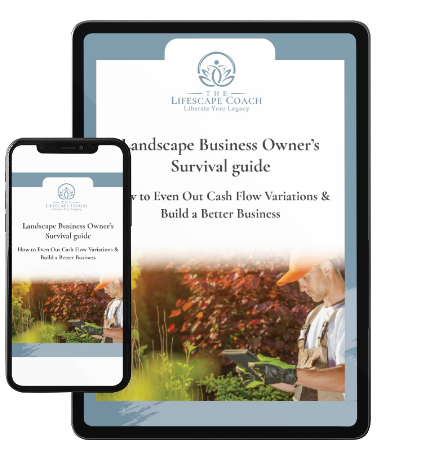Is 2018 a Growth Year For Your Landscape Business?
It’s a brand new year. Spring and the new growing season are just three months away, so it’s time to start making plans and getting active with business development. Any business looking for reliable, sustainable growth has two choices – go wide or go deep.
Let’s be clear right up front – there is no right or wrong choice. You need to decide what will work best for your business brand and theme (that is, what your mission is and how you present your company and its services to the market) and stay aligned with what you do best. Many businesses fail because they stray too far from their core strengths and the skills and resources they can bring to bear.
Will you go wide or go deep with your landscape offerings?
So what does it mean to go wide or deep? Think of it this way – going wide is similar to going to a pro football game in an enormous NFL stadium, while going deep is more like attending your son’s or daughter’s soccer game at your local community sports field. The former is a big, exciting, even overwhelming experience with crowds that lack intimacy while the latter is a much more personal and intimate experience where you can relate to other parents and better share the emotional excitement. Both experiences are exciting but different in their own unique ways.

So when you think WIDE, think big stadium, lots of people, low connection and low intimacy. When you think DEEP, think small community field, fewer people, high personal connection and intimacy.
A business example of going wide is adding a side service to your present offerings. In business-speak, this is called creating a brand extension. For example, if you are a gardening company, you might decide to add a lawn care service. You are expanding and widening your service offering by building something new onto your existing business model. This might seem easy because you can sell this service to your existing clientele. And that may be so. However, it’s also hard because the business model, the equipment, and the staff expertise needed to successfully run a lawn care service is quite different from running a fine gardening business.
A easier path to growth in this situation might be to go deep instead and add, say, edible gardens to your existing floral garden business. Same clients and better yet, same business model and essential skill sets. No additional equipment or training necessary.
While going wide has a certain allure for many landscape business owners because of the greater income potential that comes with new services and new markets, there can be a downside. Going wide often means significant capital expense associated with adding a new service line, new equipment, and new employees.
 Financial strain is only part of it. There is also the risk of burn-out. I’ve seen many of my consulting clients and colleagues take the step of adding a variety of new services such as irrigation, masonry, tree work and lawn care only to find that going wide caused them to burn-out faster because they were just stretched too thin managerially.
Financial strain is only part of it. There is also the risk of burn-out. I’ve seen many of my consulting clients and colleagues take the step of adding a variety of new services such as irrigation, masonry, tree work and lawn care only to find that going wide caused them to burn-out faster because they were just stretched too thin managerially.
Clients who added highly-related services with similar scheduling and staffing requirements, such as plant health care to a lawn care business, found they could start small and move up as the business builds. While it could entail a big investment in, say, a spray rig, it was not a big leap business model-wise.
Or, as I mentioned earlier, gardening companies that go deeper by adding edible gardens, decor, and ornamental pruning to their services. Additions such as these are far simpler, requiring some focused skill-building and minor scheduling adjustments.
So here’s the bottom line – going wide or deep, whatever you do, do something. Simply maintaining the status quo doesn’t cut it. It can be as simple as adding a new channel of communication such as email notifications to alert the client of service visits. Consider adding spring kick-off property walkabouts with the client to identify areas of potential new work, repair, or renovation -- something that suggests that you are thinking about your clients and aiming to give them more. Ask them what they want. Don’t be afraid to send out an email requesting a time to chat by phone. Find out what’s one small service or communication tool that you could add that would make you invaluable to them. These are all small moves that can really help you go deep.
Love your clients to the best of your ability
Whether you choose to go wide or go deep, the secret to success is to love your clients to the best of your ability. By that I mean spend some time understanding how to best serve them, giving them the services they need at a price that’s fair for you and your client. Talk with them, meet with them, and offer them more hands-on attention. Make them feel wanted and valued.
2018 for me will be a year of going deep. I am clear in my own mind that I don’t want to add any new services for which we aren’t already staffed or equipped. In 2017 we implemented a hyper-local business model that is quickly reducing our drive time by 50%. This means that we are geographically closer to our clients. Our mission is to go deep through relationship-building. Our goal is to identify opportunities and challenges quicker and with more frequency and then communicating the fix or the potential additional service to each client. One thing I know for sure, when you build relationships, you solidify your market strength. It’s hard for a client to ever think of replacing a trusted service provider. How about making your company that trusted service provider in 2018?
Image Copyright: 123RF Stock PhotoLandscape Business Owners Survival Guide



